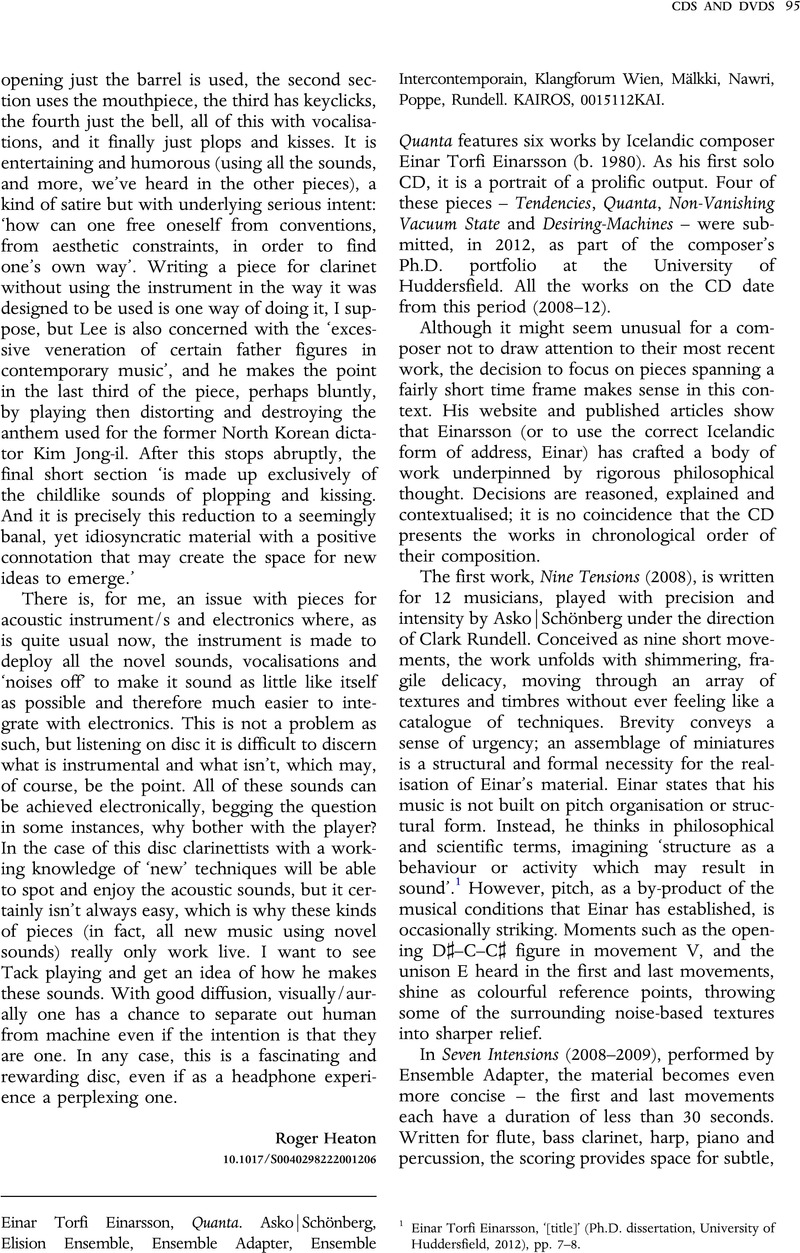No CrossRef data available.
Article contents
Einar Torfi Einarsson - Einar Torfi Einarsson, Quanta. Asko|Schönberg, Elision Ensemble, Ensemble Adapter, Ensemble Intercontemporain, Klangforum Wien, Mälkki, Nawri, Poppe, Rundell. KAIROS, 0015112KAI.
Review products
Einar Torfi Einarsson, Quanta. Asko|Schönberg, Elision Ensemble, Ensemble Adapter, Ensemble Intercontemporain, Klangforum Wien, Mälkki, Nawri, Poppe, Rundell. KAIROS, 0015112KAI.
Published online by Cambridge University Press: 03 April 2023
Abstract
An abstract is not available for this content so a preview has been provided. Please use the Get access link above for information on how to access this content.

- Type
- CDs AND DVDs
- Information
- Copyright
- Copyright © The Author(s), 2023. Published by Cambridge University Press



